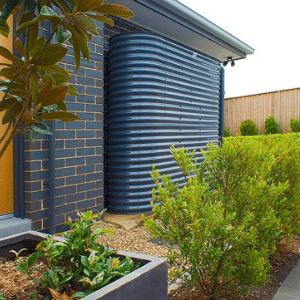Comprehending the Significance of Rain Storage Tanks in Drought-Prone Regions for Water Security
In areas vulnerable to prolonged dry spells, the duty of rain tanks in strengthening water safety is a topic of expanding importance. As areas grapple with the obstacles of water scarcity, recognizing the significance of these containers goes beyond plain collection of rainwater. Rain tanks work as a vital tool in mitigating the effect of water scarcities by offering a lasting source of water for numerous needs. The true value of rain tanks prolongs much beyond plain storage; it includes resilience-building procedures and the promo of long-term water conservation methods. This complex approach to water safety warrants a more detailed evaluation of the function rain containers play in ensuring a trustworthy water throughout times of dry spell.
Advantages of Rain Storage Tanks
Using rainwater storage tanks provides a lasting option for boosting water and boosting water protection in property and industrial settings. One of the primary advantages of rain storage tanks is their capability to minimize dependency on mains water supply. By recording and saving rainwater that falls on roofs, this different source can be utilized for various non-potable purposes such as watering, flushing toilets, and cleaning garments. This not only conserves cured alcohol consumption water however also decreases water costs for individuals.

Rainwater Harvesting Methods
Rainwater collecting techniques include a variety of methods developed to efficiently collect and store rainwater for numerous objectives, adding to water preservation and sustainability. One typical method is the setup of rooftop catchment systems, where rainwater is collected from the roof covering of a structure and guided to a storage tank. This method is reasonably basic and economical. One more popular technique is the usage of above-ground or below ground storage tanks to save rain for later use. These containers can be found in different sizes and products to fit different needs and can be attached to the existing plumbing system for very easy gain access to.

Furthermore, rainfall yards and permeable pavements are ingenious strategies that involve landscaping or paving surface areas in a manner that allows rainwater to percolate into the ground, restoring groundwater gets. Additionally, contour farming and terracing are farming techniques that aid capture rainwater and stop dirt disintegration in sloping terrain. By executing these diverse rain harvesting strategies, areas can enhance water safety and security and durability in drought-prone areas while advertising lasting water monitoring visit this web-site techniques.
Importance of Water Safety And Security
Making sure trusted accessibility to tidy and enough water sources is paramount for sustaining human health, economic development, and environmental well-being. Water security is a vital element of societal resilience, particularly in regions vulnerable to droughts and water scarcity. Adequate water protection encompasses various measurements, consisting of accessibility, high quality, and availability of water for domestic, agricultural, industrial, and ecological demands.
Water safety plays a vital function in promoting public health by reducing the frequency of waterborne illness and guaranteeing sanitation centers. Financially, water safety and security is important for agricultural performance, commercial operations, and overall economic development. Slimline water tanks. Water protection is carefully linked to ecological sustainability, as it sustains environments, biodiversity, and overall eco-friendly balance.
In drought-prone areas, water safety becomes a lot more essential because of the enhanced danger of water shortages. Applying methods like rainwater harvesting, water recycling, and reliable water management techniques can considerably boost water safety in these areas. By prioritizing water protection, neighborhoods can much better endure the influences of climate adjustment, population development, and other difficulties that threaten water accessibility.
Enhancing Water Strength
With enhancing international water challenges, developing strength in water systems has actually become a vital focus for lasting growth efforts. Enhancing water durability entails applying techniques to make certain water availability and quality when faced with transforming environmental conditions, such as dry spells, floods, and contamination.
One trick element of improving water resilience is promoting making use of rain tanks in drought-prone regions - Slimline water tanks. Rainwater containers work as an effective ways of recording and saving rain for later usage, decreasing dependence on scarce freshwater resources throughout completely dry durations. By incorporating rainwater harvesting systems into water monitoring strategies, communities can enhance their capability to hold up against water scarcity and maintain water safety and security

Sustainable Water Preservation
Amidst intensifying water challenges, the sensible monitoring of water sources through sustainable conservation methods is essential for making sure long-lasting ecological security and social health. Lasting water preservation entails the efficient use of water resources to satisfy present requirements without jeopardizing the capability of future generations to fulfill their very own needs. By applying approaches such as rain harvesting, greywater recycling, and water-efficient modern technologies, communities can reduce water wastage and reduce pressure on freshwater sources.
Furthermore, sustainable water preservation techniques add to ecosystem wellness by preserving appropriate water degrees in rivers, lakes, and marshes, supporting biodiversity, and preserving natural environments. These techniques additionally play a critical duty in minimizing the influences of environment modification by assisting to adapt to changing rainfall patterns and water schedule.

Final Thought
Finally, Read More Here rainwater storage tanks play a critical role in improving water protection and strength in drought-prone regions. By using rain harvesting strategies, communities can decrease their reliance on typical water sources and promote sustainable water preservation techniques. This not only assists minimize the influences of water scarcity during droughts however likewise adds to lasting water protection and resilience in the face of climate change difficulties.